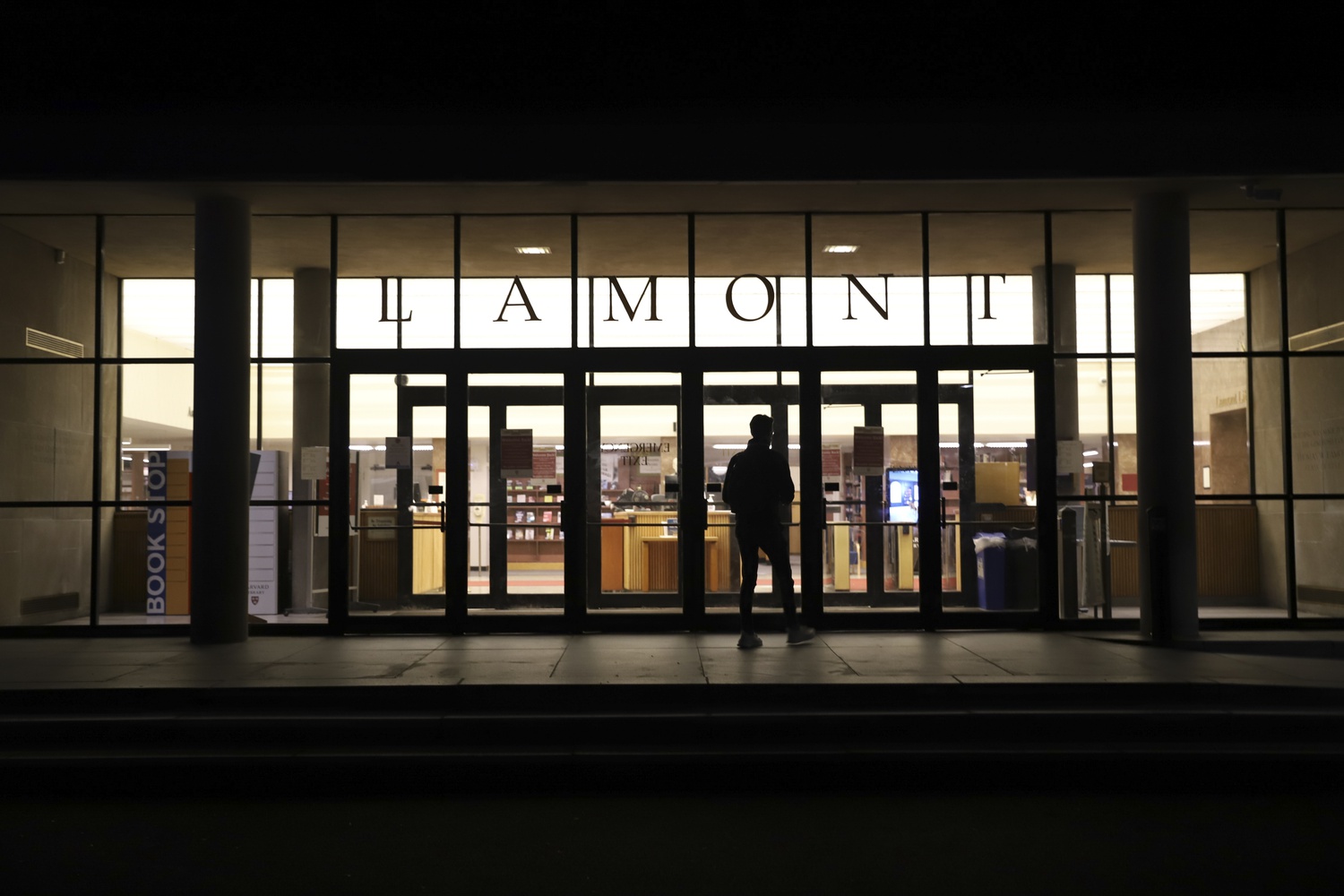
News
Summers Will Not Finish Semester of Teaching as Harvard Investigates Epstein Ties

News
Harvard College Students Report Favoring Divestment from Israel in HUA Survey

News
‘He Should Resign’: Harvard Undergrads Take Hard Line Against Summers Over Epstein Scandal

News
Harvard To Launch New Investigation Into Epstein’s Ties to Summers, Other University Affiliates

News
Harvard Students To Vote on Divestment From Israel in Inaugural HUA Election Survey
The Uncompromisable Eight Hours
Science ‘n Tradition

If you walk into Lamont Library at 4 a.m., you will likely find many resolute Harvard students finishing essays, working on problem sets, or cramming for exams. These are the Lamonsters. Lamonsters are a special breed of student intent on taking advantage of Lamont Library’s 24-hour availability, and clearly willing to compromise on spending time on other seemingly unimportant things in life, like sleep.
I am convinced there is a Lamonster within every Harvard student, an inner voice telling us to take advantage of the late-night study opportunities and turn every second of every day into a productive moment. There seems to be a sense of pride in announcing “I got three hours of sleep last night” or “I slept at 6 a.m.”
But sleep isn’t the place to cut corners.
Sleep is our body’s time to grow and recuperate: from boosting our immune systems to ridding our brains of toxin buildup. The release of growth hormones during sleep is essential for development and metabolism. Perhaps most pertinently to students, sleep allows the brain to perform memory consolidation, essentially converting our daily experiences into long-term memories in the form of modified neuronal connections.
This explains why spending the whole night studying for an exam may prove futile in the long run versus catching a few extra hours of sleep. Accumulating such sleep debt may lead to obesity, cardiovascular issues, and other severe life threats. And sleep debt is not easy to repay: Research has shown that it can take up to four days of quality sleep to account for one lost hour of sleep.
Still, skipping sleep is appealing. Between classes, extracurriculars, and jobs, students have packed schedules. How are we supposed to get everything done in the limited waking hours of the day? Are there ways to get around the recommended seven to nine hours of sleep?
A commonly employed strategy is naps. Several recent studies have shown that supplemental daily daytime naps can actually improve memory consolidation and learning.
But not all naps are energizing.
As we sleep, our bodies cycle between four stages. Stages one and two are shallow sleep, in which our bodies begin relaxing. In stage three, our bodies enter deep sleep. Finally, in stage four, or rapid eye movement sleep, brain activity becomes similar to waking levels. This stage of sleep is believed to aid with cognitive functions like memory and creativity.
It is difficult to wake up when you are in stage three deep sleep. Doing so can leave you groggy and tired — quite literally getting up on the wrong side of the bed. So approximately 20-minute power naps, in which you are restricted to stages one and two, or longer 90-minute naps, during which your body cycles through the four stages, are ideal.
Another way to avoid feeling groggy is through lighting. Part of how our bodies determine when we should sleep is by recognizing light. In our brains, a structure called the suprachiasmatic nucleus detects light. As it starts getting dark, this structure signals the pineal gland to secrete melatonin, the hormone that keeps us on 24-hour cycles or circadian rhythms — especially the sleep-wake one.
We can manipulate our circadian rhythms by exposing ourselves to more light. Bright light in the morning can make you fall asleep earlier in the night; bright light in the evening can lead you to fall asleep later.
The color of the light can also impact wakefulness. Evolutionarily, this system allowed us to make the most out of natural changes in light color throughout the day, from red-yellow at sunrise to blue-white during the day and back to red-yellow for sunset. While white and blue LED lights can suppress melatonin secretion and lead to subsequent alertness, yellow light doesn’t impact our circadian rhythms much.
This suggests the need to rotate through libraries at Harvard. Spending a few hours in Cabot Library’s white and brightly-lit library in the evening, before heading to Lamont’s yellow and relatively dimly-lit basement, might surprisingly help you remain energized.
Sleep is inevitable, though. While taking naps and being aware of situational lighting can help you better optimize your day, science tells us that it is important to dedicate time to sleep and honor that commitment.
If you’re dozing off during a particularly long lecture, or can only get through the day when you’re amped up on caffeine, your body is telling you that you need rest and recuperation. So for all the habitual Lamonsters, ask for extensions, take later classes, and go to sleep!

Sandhya Kumar ’26 lives in Greenough Hall. Her column, “Science ‘n Tradition,” runs on alternate Tuesdays.
Want to keep up with breaking news? Subscribe to our email newsletter.
